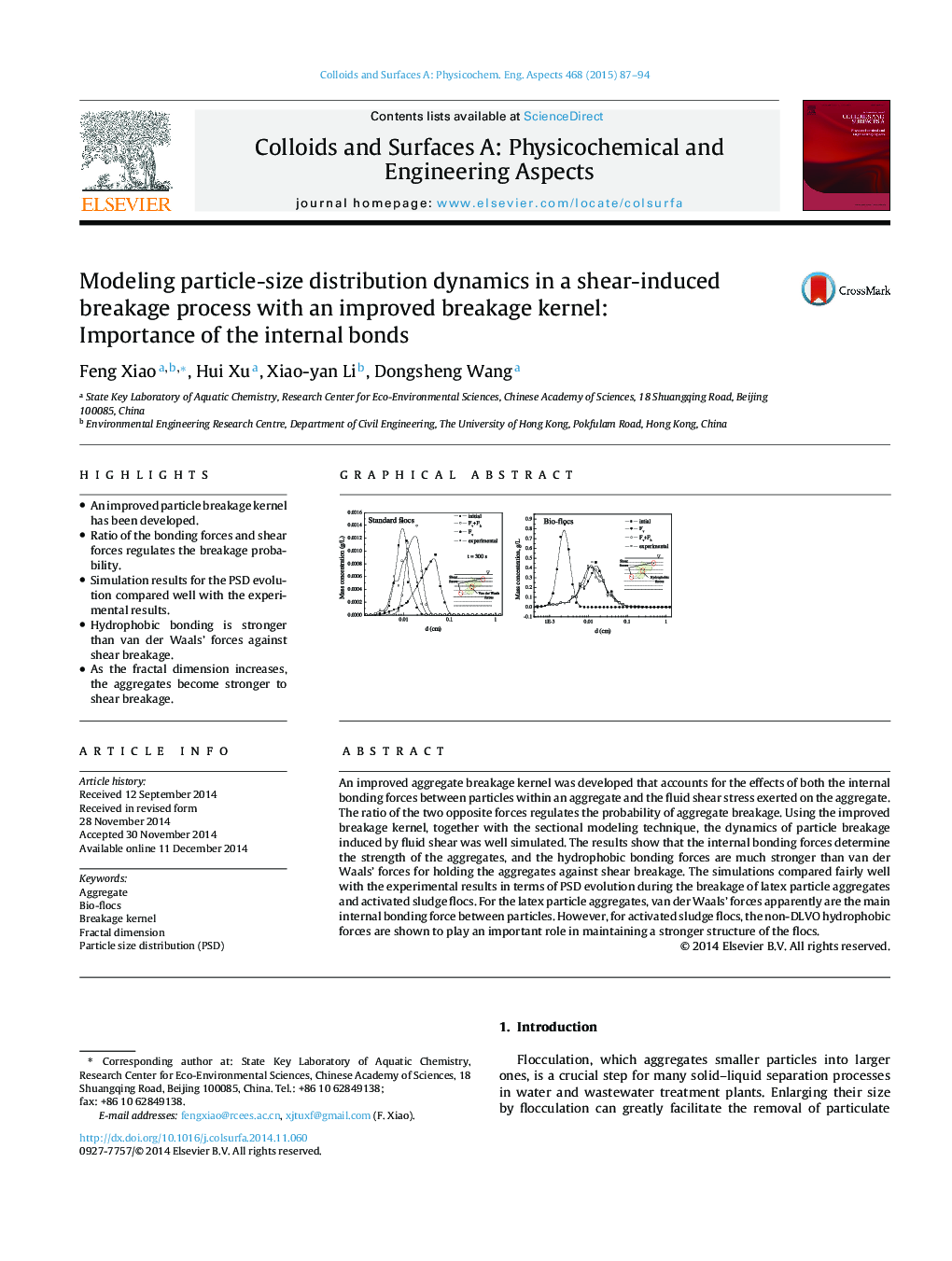| Article ID | Journal | Published Year | Pages | File Type |
|---|---|---|---|---|
| 592472 | Colloids and Surfaces A: Physicochemical and Engineering Aspects | 2015 | 8 Pages |
•An improved particle breakage kernel has been developed.•Ratio of the bonding forces and shear forces regulates the breakage probability.•Simulation results for the PSD evolution compared well with the experimental results.•Hydrophobic bonding is stronger than van der Waals’ forces against shear breakage.•As the fractal dimension increases, the aggregates become stronger to shear breakage.
An improved aggregate breakage kernel was developed that accounts for the effects of both the internal bonding forces between particles within an aggregate and the fluid shear stress exerted on the aggregate. The ratio of the two opposite forces regulates the probability of aggregate breakage. Using the improved breakage kernel, together with the sectional modeling technique, the dynamics of particle breakage induced by fluid shear was well simulated. The results show that the internal bonding forces determine the strength of the aggregates, and the hydrophobic bonding forces are much stronger than van der Waals’ forces for holding the aggregates against shear breakage. The simulations compared fairly well with the experimental results in terms of PSD evolution during the breakage of latex particle aggregates and activated sludge flocs. For the latex particle aggregates, van der Waals’ forces apparently are the main internal bonding force between particles. However, for activated sludge flocs, the non-DLVO hydrophobic forces are shown to play an important role in maintaining a stronger structure of the flocs.
Graphical abstractFigure optionsDownload full-size imageDownload as PowerPoint slide
